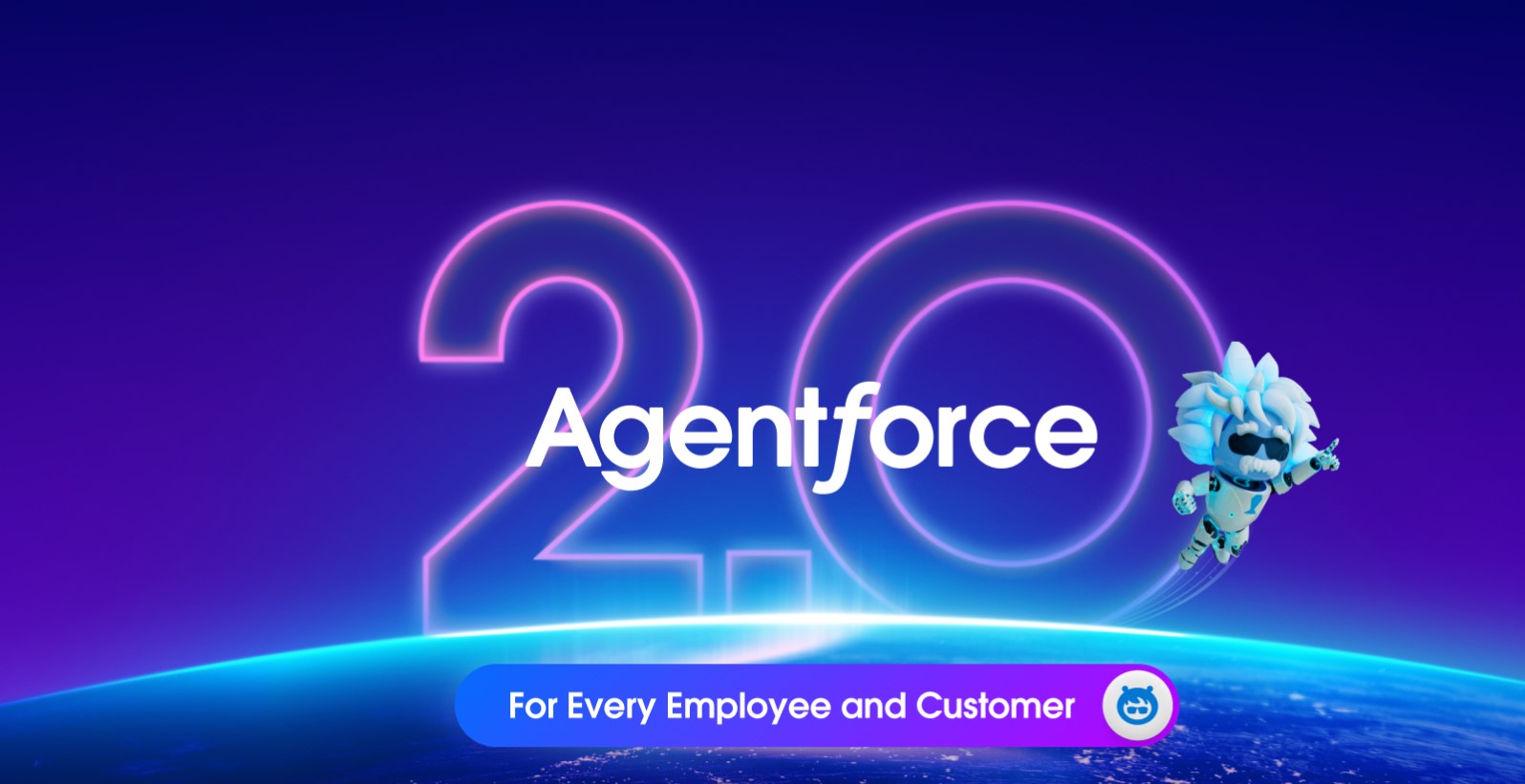The release of Salesforce Agentforce 2.0 introduces a powerful AI-driven architecture that transforms how enterprises build, deploy, and manage intelligent agents. However, leveraging these advanced capabilities requires a well-structured DevOps strategy.
Below are best practices for ensuring successful implementation and optimization of Agentforce 2.0.
Pic Courtesy: Salesforce
Best Practices for AgentForce 2.0
Below are best practices for ensuring successful implementation and optimization of Agentforce 2.0.
Version Control: Keep AI Configurations Organized
Managing the complexity of Agentforce 2.0 is easier with proper version control. DevOps teams should:
- Treat Agent Definitions as Code: Store agent definitions, skills, and configurations in a version-controlled repository to track changes and ensure consistent deployments.
- Skill Library Versioning: Maintain a version history for agent skill libraries, enabling rollback to earlier configurations if issues arise.
- API Catalog Versioning: Track updates to the API catalog, including metadata changes, to ensure agents remain compatible with system integrations.
- Permission Model Versioning: Maintain versioned records of permission models to simplify auditing and troubleshooting.
Deployment Strategies: Ensure Reliable Rollouts
With Agentforce 2.0’s advanced capabilities, deployment strategies must be robust and adaptable:
- Phased Rollouts by Capability: Gradually introduce new agent features or integrations to minimize disruption and allow for iterative testing.
- A/B Testing for Agent Behaviors: Use A/B testing to compare different configurations or skills, ensuring optimal agent performance before full deployment.
- Canary Deployments: Deploy new features to a small subset of users or agents first, monitoring their performance and impact before wider adoption.
- Rollback Procedures: Develop clear rollback plans to quickly revert changes if issues are detected during deployment.
Monitoring: Measure and Optimize Agent Performance
Comprehensive monitoring is critical to maintaining and improving Agentforce 2.0 performance:
- Agent Performance Metrics: Track reasoning accuracy, response times, and user engagement to identify areas for improvement.
- Reasoning Accuracy Tracking: Measure the success rate of System 1 (fast) and System 2 (deep) reasoning to optimize agent workflows.
- API Utilization Monitoring: Monitor API call frequency, error rates, and quota usage to ensure system health and avoid bottlenecks.
- Security Audit Logging: Maintain detailed logs of agent activities and API calls for compliance and security audits.
Performance Optimization: Maximize Efficiency
Agentforce 2.0 introduces advanced reasoning and orchestration capabilities that require careful resource management:
- Response Time Management: Balance System 1 and System 2 reasoning for fast and accurate responses, leveraging caching and query optimization techniques.
- Async Processing Patterns: Use asynchronous processing for long-running workflows to prevent system delays.
- Caching Strategies: Implement caching mechanisms for frequently accessed data to reduce response times and API calls.
- Resource Allocation: Ensure adequate compute, memory, and storage resources are available to support high-demand agent activities.
Scalability Considerations: Prepare for Growth
Agentforce 2.0’s capabilities are designed to scale with enterprise needs, but proactive planning is essential:
- Multi-Region Deployment: Deploy agents across multiple regions to ensure low latency and high availability for global users.
- Load Balancing: Distribute workloads evenly across resources to prevent bottlenecks and downtime.
- Rate Limiting: Implement rate-limiting strategies to avoid overloading APIs and other system components.
- Failover Strategies: Establish failover protocols to maintain service continuity during outages or unexpected surges.
Security and Compliance: Protect Data and Systems
The integration of intelligent agents with enterprise systems demands a heightened focus on security:
- Attribute-Based Access Control: Implement granular access controls to ensure agents and users only access authorized data.
- Data Residency Management: Comply with regional data residency requirements by deploying agents and data services in appropriate locations.
- Encryption Key Management: Regularly rotate encryption keys to safeguard sensitive data.
- Audit Trail Generation: Maintain comprehensive audit trails for all agent activities to support compliance and troubleshooting efforts.
Collaborative Workflow Development: Bridge Gaps Between Teams
The success of Agentforce 2.0 deployments relies on cross-functional collaboration:
- Unified Development Practices: Align DevOps, AI development, and business teams to ensure agent capabilities meet organizational goals.
- Iterative Testing: Adopt an agile approach to testing agent configurations and workflows, incorporating feedback from users and stakeholders.
- Knowledge Sharing: Promote knowledge-sharing sessions to keep all teams informed about Agentforce updates and best practices.
Conclusion
The transformative potential of Salesforce Agentforce 2.0 comes with new operational challenges and opportunities. By following these best practices, DevOps teams can ensure a smooth implementation process, unlock the platform’s full capabilities, and deliver unparalleled AI-powered solutions to their organizations. Careful planning, robust monitoring, and a commitment to continuous improvement will be key to success.
Source: Read MoreÂ

